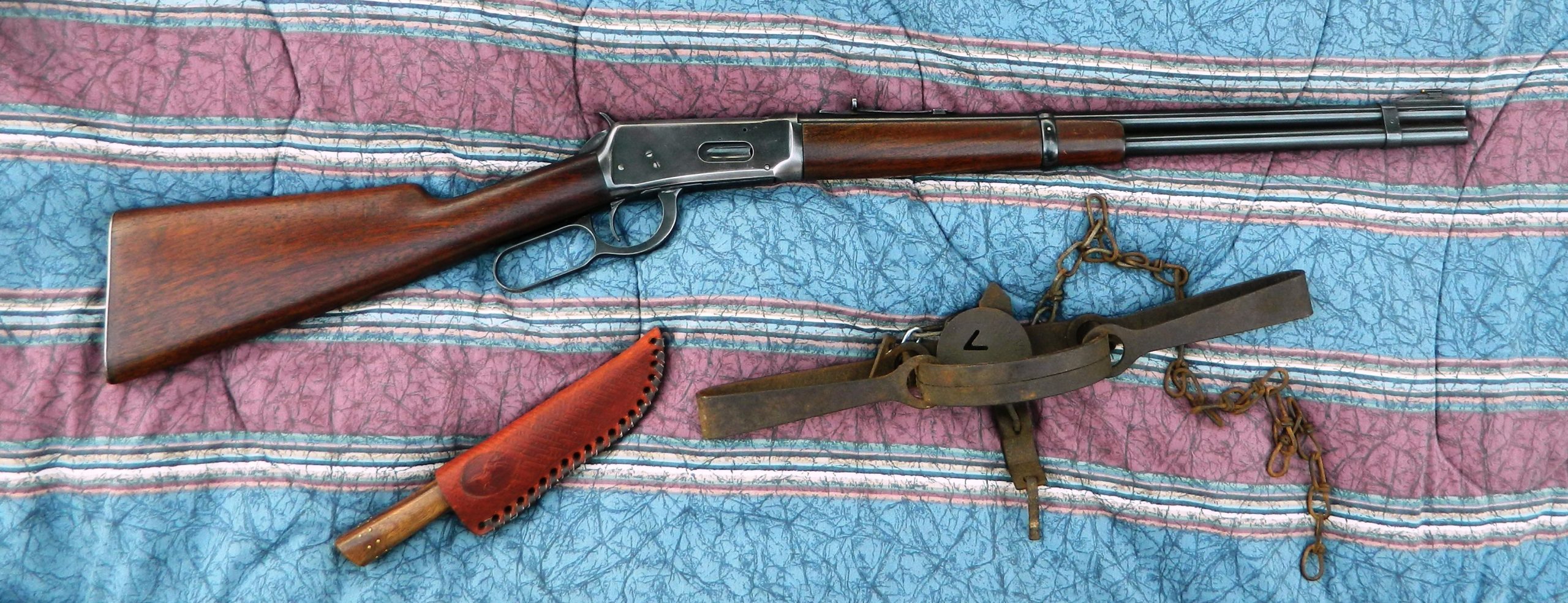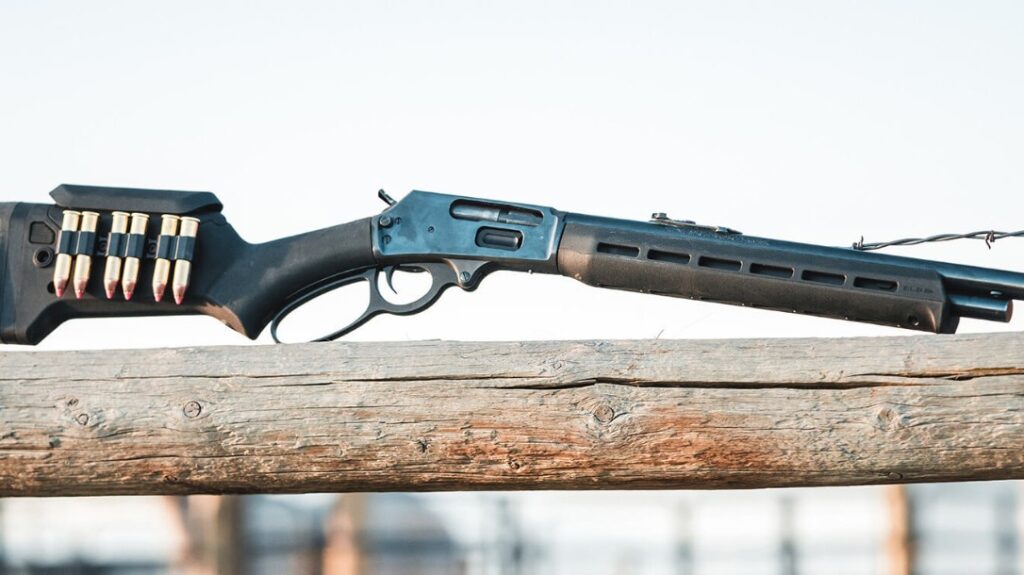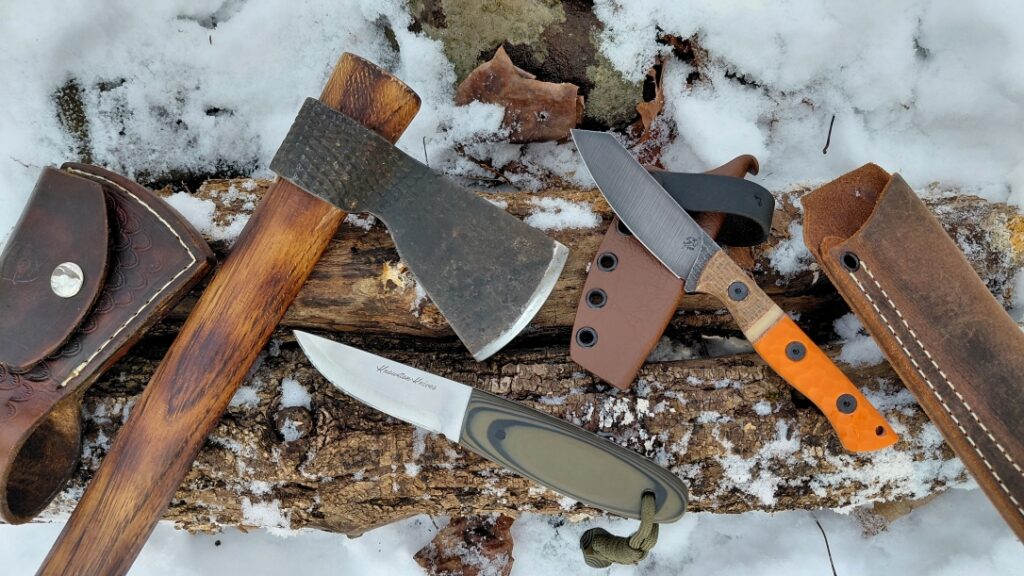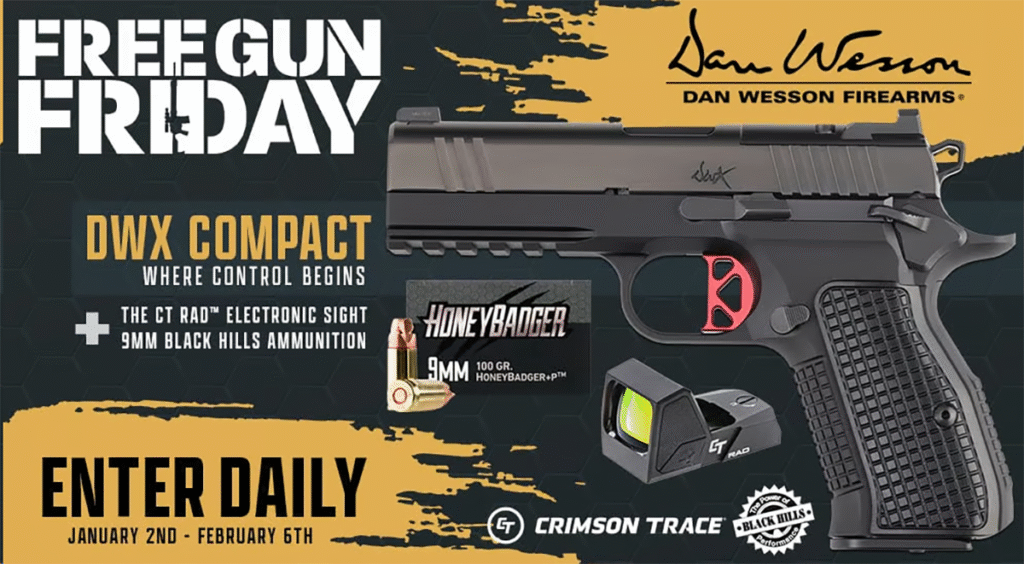The Winchester 1894 has every element of a desirable American rifle. A sense of history, emotional attachment, and excellent power and performance cannot be faulted. The will take game save your hide and serve without maintenance for many decades. People with similar interests end up with similar rifles. These interests include shooting, hunting, and accumulating firearms. We are drawn to the display cases as aboriginals to a ceremonial fire. A man staring into that case may appear to be motionless and doing as close to nothing as possible, but nothing could be further from the truth. As my friends Tanner, Trey, Kevin and Morris watch this with daily attention their customers are deep in thought. Finally- perhaps after a number of trips to the shop they will ask to see something from the case. More often than not in today’s economy the piece is laid away for weeks or even months. After all we all have more guns than we need and less than we want. Some windfall may result in an early acquisition or perhaps the inevitable harrowing of the shelves that occurs at tax time or during the general election will speed the process up. Finally the lay away ticket is marked paid in full and the paper work is completed and the new addition taken home. This is as close to pregnancy and childbirth as a man may come.
One of my rifles was recently brought home after just such as stay. The rifle is a Winchester Model 1894. The Winchester 1894 is the brainchild of John Moses Browning. He was an extraordinary individual and inventor. The lever action rifle was nothing new but the Model ’94 owes little to previous rifles. Certain rifles in the blue steel and walnut age still call to us. The Royal Canadian Mounted Police had a long association with the Winchester rifle. By a trick of fate the Winchester was used by shore patrols in England in the dark days of World War Two when any good firearm was worth its weight in gold. The Canada Rangers patrolled the Pacific slopes with the ’94. The rifle was used by both the good and the bad. In my memory is a case in which a night clerk at a motel took out a bad actor that was attempting to rob the clerk. The night clerk owned one rifle, a Winchester 1894 .30-30 WCF and he took it to work with him and kept it in a corner. The man he shot and killed through a car door was the primary suspect in an ambush of a peace officer. The majority of my memories are of deer taken with the Winchester 1894 by more hunters than I could name. Like many of you the Winchester 1894 was my first center fire rifle.
None of us are immortal but John Moses Browning’s memory and his guns seem to be. There have always been and will continue to be more cheap guns than good guns. A few firearms have become firmly respected trappings, reaching legendary status. The Winchester 1894 combined the popular lever action with a high powered smokeless powder cartridge. The Winchester 1894 harkens back to a time when blue steel and walnut ruled. The Winchester 1866 and Winchester 1873 may have been in action earlier but the ’94 enjoyed a long life in the West and elsewhere. The .30-30 WCF lever action rifle was still in use in police work, particularly with highway patrol officers, well into the 1990s and perhaps beyond. The LAPD issued Winchester 1894 rifles during the Watts riots. While the shorter Model ’92 action had greater leverage for its short fat pistol caliber cartridges the Model 94 fired a .30 caliber center fire cartridge with much greater range and accuracy. If you have ever attempted to sight a .44-40 rifle in for 175 yards then you know exactly what I am speaking of. The 1894 rifle is still in production but it stalled for a while with a hitch in production in 2006 when the Winchester plant in New Haven Connecticut closed. At that point some seven million rifles had been produced.
Advertisement — Continue Reading Below
Advantages of the Model 1894
The Model 1873’s toggle action worked well enough but was not particularly robust, one reason the military never issued the rifle. Scouts used the rifle and appreciated its firepower. The new lever action rifle by Browning used a single operating bar in contrast to the dual sliding rods of the Model 1892. The rifle also had a greater margin for safety due to a new firing pin design. The rifle was smooth and capable but not as fast as the previous rifles. It was more for long range deliberate fire than the earlier rifles. While many rifles were produced with longer barrels and special stocks the 20 inch barrel carbine was the most common 1894 rifle. The new .30-30 WCF cartridge pushed a 160 grain bullet to some 1970 fps. No more did the western hunter have to memorize hold over or hope for the best. The new cartridge shot amazingly flat . While the .44-40 was credited with killing more men good and bad than any other caliber in the old west the .30-30 put more game on the table. The rifle was particularly praised in the far reaches of the continent such as Alaska for faultless reliability.
My first center fire rifle was a thirty thirty and a Winchester. We just called the Winchester a thirty thirty as we called the Colt 1911 a .45. Very few other types were seen. The Winchester 1894 suffered indignity in 1964 with production changes that were not as severe as those of the Winchester Model 70, and these changes were meant to cheapen production. Pre ’64 rifles such as the one illustrated are treasured for this reason. The modern Miroku produced rifles are at least as accurate as reliable, however. The new gun also features a washer to tighten the action, the original action was plenty tight. When firing the rifle off hand, remember, do not push the lever down but forward for fast and efficient operation.
Advertisement — Continue Reading Below
Accurate, powerful and with modest recoil, the 1894 Winchester Special is a great all around woods gun. Modern ammunition technology has made the rifle even better. Hornady introduced the LeverRevolution line of cartridges some years ago. The lever action rifle had previously not been compatible with pointed bullets. The nose of the spitzer type bullet set on the primer of the cartridge ahead and could result in a detonation under the forces of recoil. Flat nose bullets were used in lever action rifles for safety purposes. ( A few enterprising souls handloaded hot spitzer loads for the .30-30 and loaded one in the chamber and a single round in the tubular magazine.) Hornady’s LeveRevolution bullet features a polymer tip on top of a pointed bullet. This ingenious design allows the use of ballistically superior loads. The LeverRevolution line breaks a solid 2,250 fps with a 160 grain bullet. I cannot do this with a handload. With quality handloads the Winchester will often print a two inch 3 shot group at 100 yards and about two and one half inches with most factory loads. There is nothing wrong with the hard hitting fast expanding 150 grain loads.
Competition Electronics Chronograph 15 feet
Velocity
Advertisement — Continue Reading Below
- Hornady 150 grain JSP: 2254 fps
- Hornady 160 grain LeveRevolution: 2250 fps
- Winchester 150 grain Super X: 2224 fps
- Priv Parizan 150 grain: 2111 fps


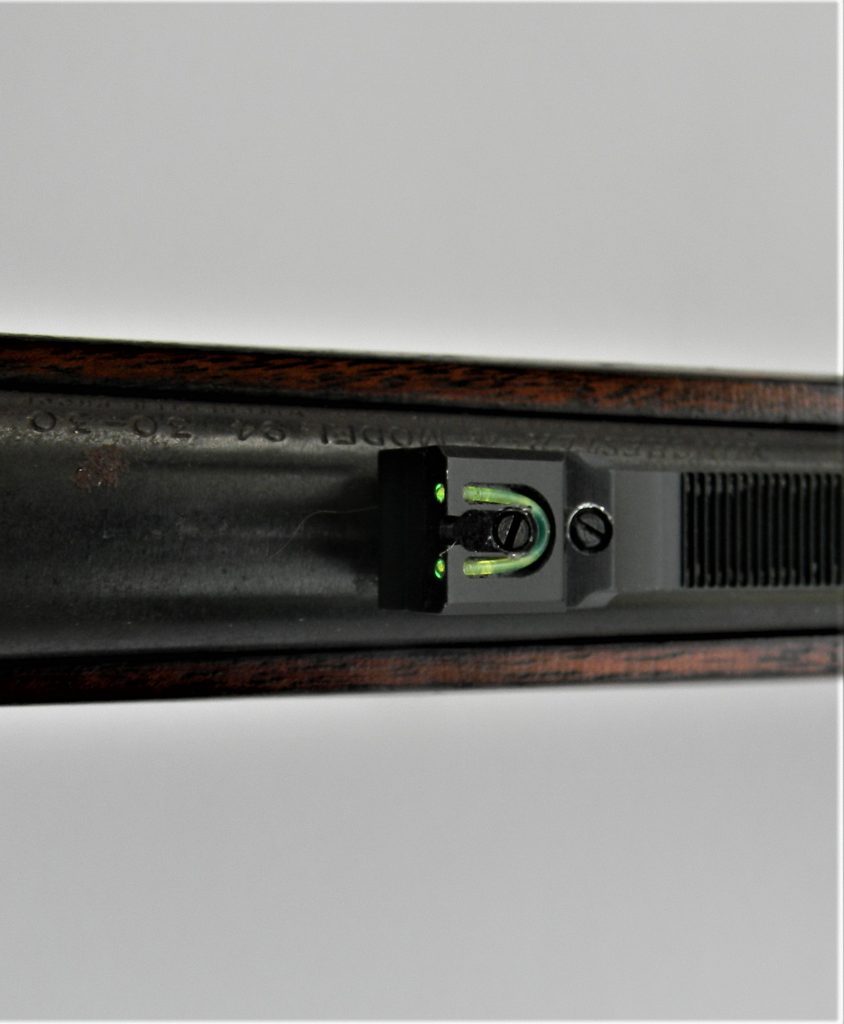
Advertisement — Continue Reading Below
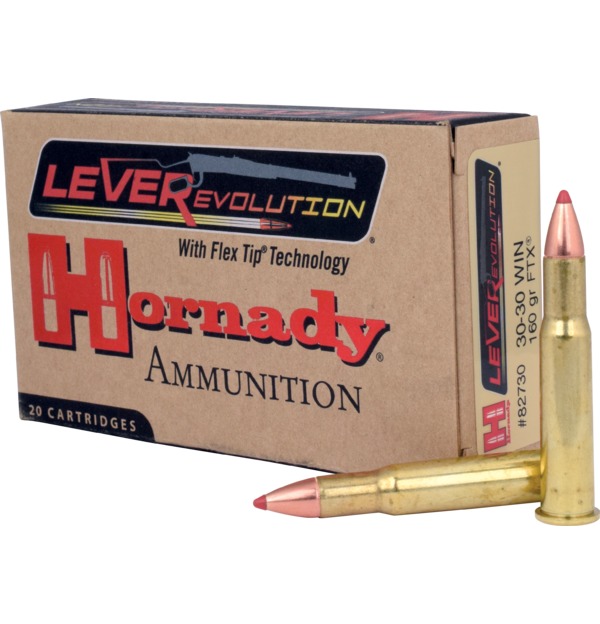
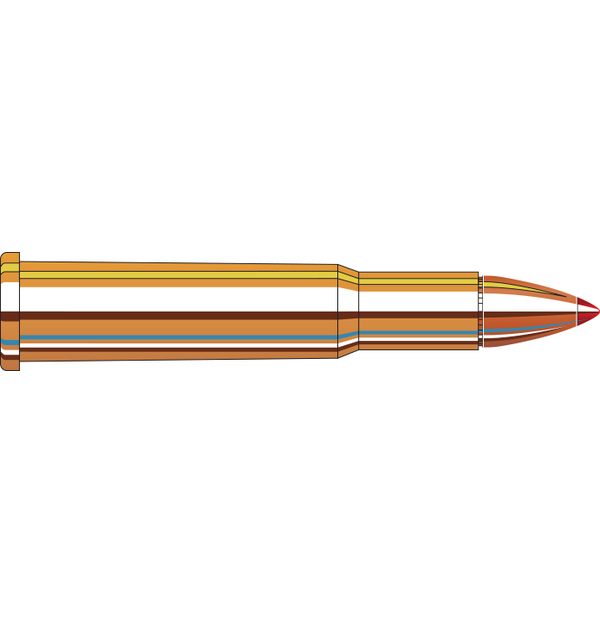
The Winchester is still a fine survival rifle you should have on hand. A tip- add TruGlo fiber optic sights. The improvement is vast.
Advertisement — Continue Reading Below
